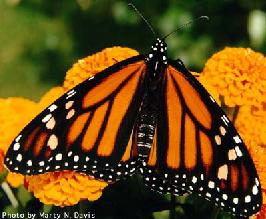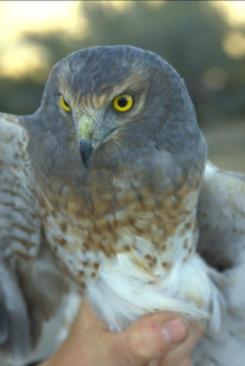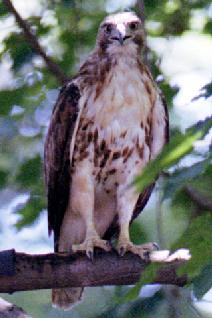Blue Ridge Parkway

The Appalachian mountains form a convenient route for migrating wings riding the air currents south and channel impressive numbers of migrating hawks and Monarch butterflies. Not to mention the beautiful flowers all along the route.

~ the Linvlle Gorge also known as the Grand Canyon of the East~
The MONARCH BUTTERFLIES
The cycle begins in Mexico in the spring. Pregnant female monarchs that have wintered in Mexico begin to travel northward. Most of the males have lived only long enough to mate with the females, although a few will also begin the trek north. This generation will die after their reproductive duties are done. The females fly until they feel compelled to lay their eggs on one of the 107 species of milkweed plants that grow in North America.

~monarch female on a milkweed plant~
They only lay their eggs on milkweed plants and the caterpillars that hatch out in a few days will only eat milkweed plants. In the process, they make themselves poisonous to other animals that would try to devour them. Most animals recognize the Monarchs as poisonous and won't even try to eat them. In two weeks, the caterpillars will increase their weight by 3000 times before spinning themselves into a chrysalis. New Monarchs will emerge in just a few days and will continue to fly northward.

~a colorful monarch caterpillar~
After the reproductive work is done, Monarchs have had it and die. The next generation will push the whole species farther north before they too die and a new generation continues on. It takes 3 to 6 generations of Monarchs to reach the northern limit of their range.
In August, as the days begin to shorten, priorities for the Monarchs change from reproduction to storing fat for the flight back to Mexico. Adult butterflies feed on flower nectar. Butterflies that begin the trek back without mating will live up to 8 months, compared to the 6 week lifespan of their more promiscuous relations. The fall migration begins in August and continues into the fall. Many areas of the United States will have migrating Monarchs moving through.

~the Monarch Butterfly~
the HAWKS
The annual autumn hawk migration down the Blue Ridge can be spectacular.
The Broad-Winged hawks will begin their movements south to their wintering grounds in the tropics. Broad-Winged hawks are "buteos", large, thick-set hawks, with broad wings and rounded tails. Because of their size, the buteos like to take advantage of air movements to ease their long journey, and Broad-Winged hawks in particular are known for their use of the thermal air currents.

~the Sharpshinned Hawk~
Red-tailed hawks become more numerous as migrants. The Red-Tails are buteos, but nevertheless utilize the deflective currents because by the time their migration begins thermal production has been decreased through shortened days and cooler temperatures. The Red-Tailed migration continues into November and they may be accompanied by Red-Shouldered Hawks, Northern Harriers and occassional Peregrine Falcons. Northern Goshawks and rare Golden Eagles are more likely to be seen in November after the leaves have fallen.

~a Red Tailed Hawk~
some of the many WILDFLOWERS
The Blue Ridge Parkway is a wild flower lover's paradise, offering a huge variety of native species during spring, summer, and fall. Depending on your elevation and north/south orientation, some species can be found blooming over a considerably long period of time.
|
|